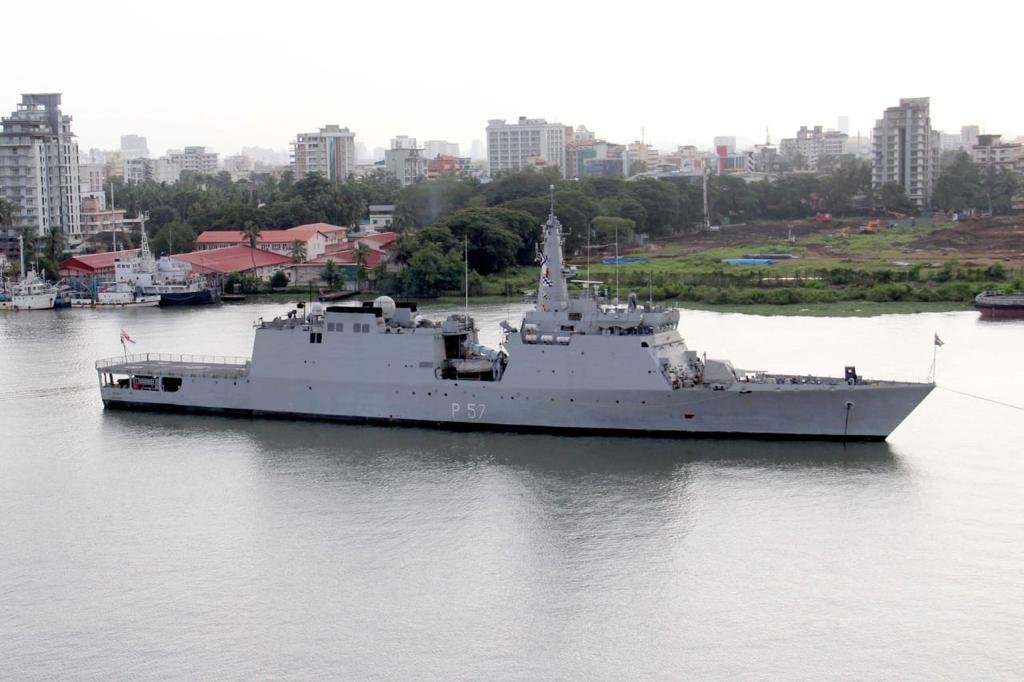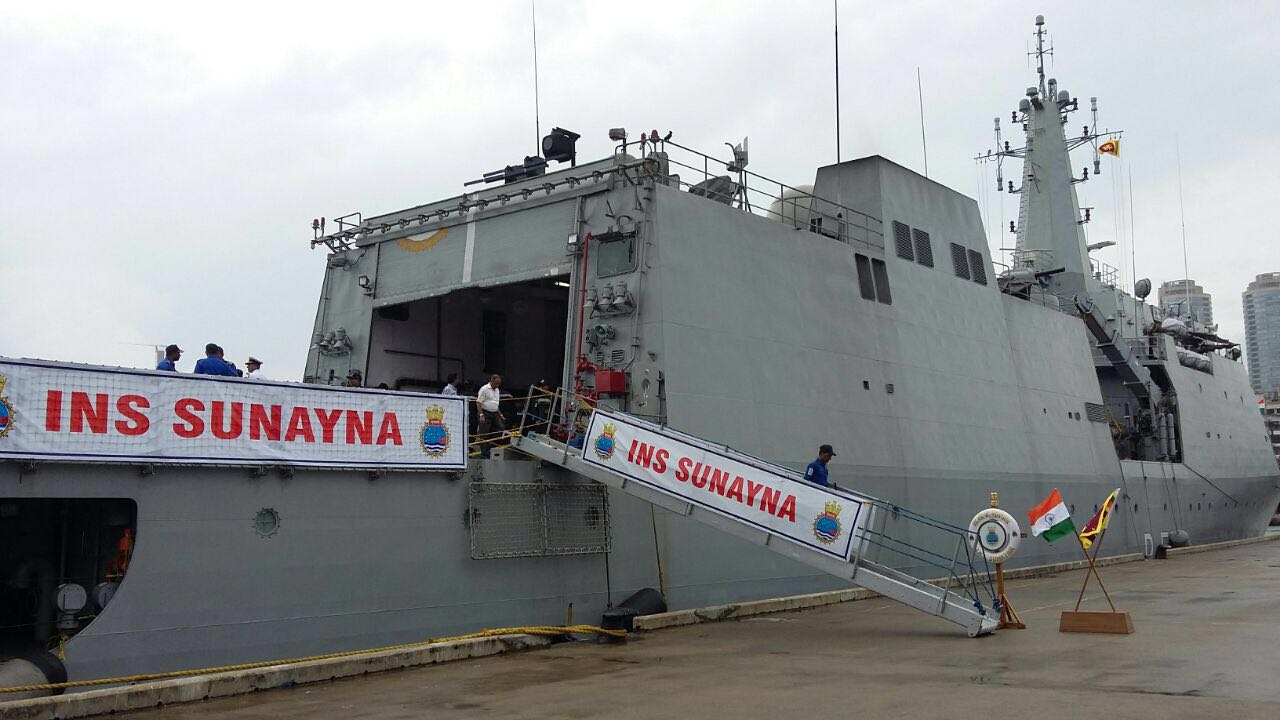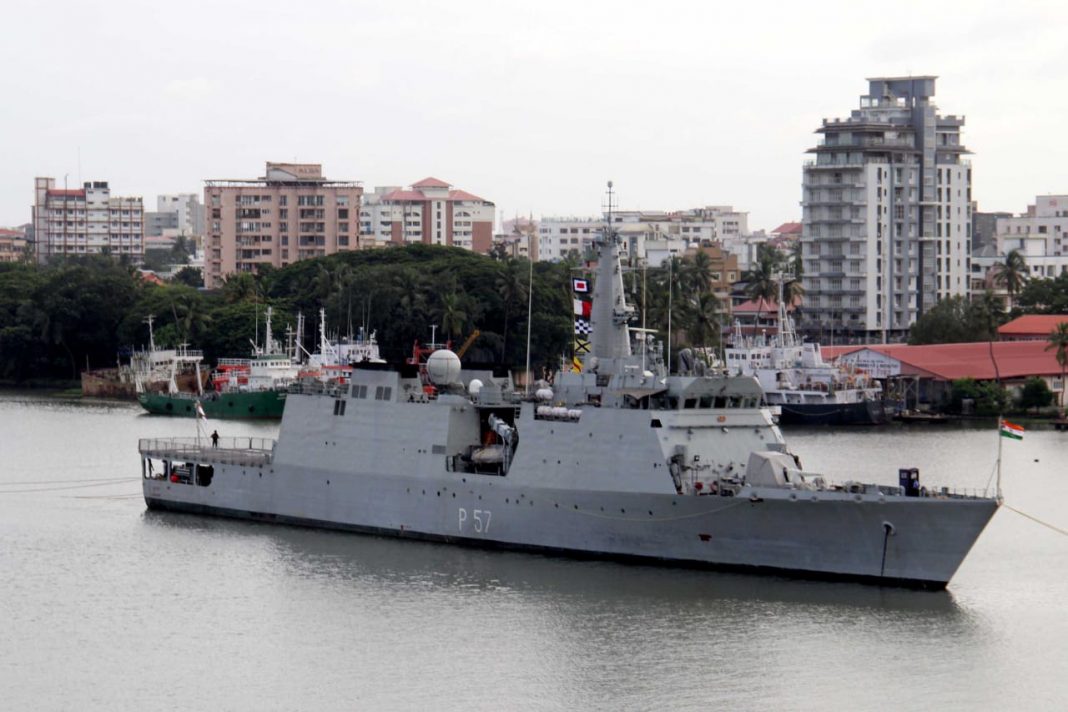Just yesterday, i.e May 21, 2020, the INS Sunayna (P-57), a 2000-tonne, indigenous offshore patrol vessel (OPV) which had been dispatched for anti-piracy operations and mission-based deployment to the Gulf of Aden, returned to its homeport of Kochi after a spending a gruelling 80 days at sea. Since the ship was out for such a long time and shore-based support was impossible due to the pandemic situation, the INS Sunayna had to be replenished at sea. This was accomplished with the help of fleet support ships. The replenishment operation took place in the Gulf of Aden. The ship could not and did not enter any port due to Covid-19 restrictions and the extended deployment is a testimony to the Indian Navy’s (IN’s) operational reach.
https://www.youtube.com/watch?v=tzPsZOoXxOI
Watch: INS Sunayna being replenished at sea.
INS Sunayna is of course a Saryu class offshore patrol vessel (OPV), which is the largest type of OPV in service at the moment. The Saryu-class also includes the INS Sumitra, INS Sumedha, and, of course the INS Saryu. Two vessels of the class were also supplied to the Sri-Lankan Navy — SLNS Sayurala, and SLNS Sindurala. As such, The INS Sunayna was built in 2013 as part of an Rs 2452 crore deal signed between Goa Shipyard Limited (GSL) and the IN.

About the Ship:

- INS Sunayna, pennant number (P-57) is a 2,000-tonne Offshore Patrol Vessel.
- It is the second indigenous Saryu-class patrol vessel to be inducted into the IN and has been designed and constructed by GSL.
- It is designed to undertake fleet support operations, coastal and offshore patrolling, ocean surveillance, and monitoring of sea lines of communications and offshore assets and escort duties.
- Earlier, in June 2018, INS Sunayna was deployed as part of “Operation Nistar”, a Humanitarian Assistance and Disaster Relief mission to evacuate Indian nationals from Yemen’s Socotra islands after the same was subject to the fury of a cyclone.
- The INS Sunayna is listed as a Naval OPV (NOPV) in the GSL catalogue.
- The ship’s design features an active fin stabilizer, which reduces rolling motion when the seas are rough by maintaining the desired position with the help of fins
- When the seas are rough, the fins extend outward, increasing the ship’s surface area, and, in turn, the buoyancy and hydrodynamic drag
- This active fin system is one of the key features behind INS Sunanya’s improved bad-weather handling and performance as compared to older vessels of comparable role and size.
- The INS Sunanya is powered by a twin Colt-Pielstick PA-6B STC diesel engine powerplant with 18-cylinders in each unit, generating a total power output of 15,797 kilowatt (kW).
- The propulsion unit features a number of locally sourced sub-systems such as the gearbox and the oil filtration system.
- The propeller is of a controllable-pitch type — it automatically adjusts the blade angle to provide maximum forward impulse, no matter how choppy the seas get.
- The ship’s engines have been tuned to operate in tropical temperatures (45 – 58 degrees centigrade)
- The maximum speed is 35 knots (63 kmph), while maximum endurance range is 6,000 nautical miles ( about 11,000 km)
- Armament-wise, the INS Sunanya carries a 76-mm, remote-controlled super-rapid gun-mount manufactured at OFB Trichy and 2 AK-630 close-in weapons systems
- Countermeasures include chaff dispensers and the Sanket MkIII Electronic Support Measures system developed by Bharat Electronics Limited.
- The Kavach chaff dispenser used in the INS Sunayna is a standard anti-missile decoy suite developed by the Ordnance Factory Board and is currently used across many other weapons platforms.
- The DRDO-developed EON-51 optical fire control system mounted aboard the INS Sunanya uses a thermal imager, a laser rangefinder, a CCD camera, and an all-digital console.
- The electro-optical fire control system can passively search, track and detect fixed and moving targets at sea, up to a 15-km range.
- It can also be used for shore navigation during silent radar operation, accurate target tracking and ranging, and all-weather, 24-hour fire control computation for the 76-mm multipurpose Oto Melara rapid-firing gun.
- The ship can accommodate 16 officers and 102 sailors, and has space on board for rubber-hull inflatable boats and also features an open helipad (for 10-tonne-class helicopters) and a hangar (specially-designed for the ALH Dhruv, albeit with folding rotors)
The ship was welcomed back by senior officers of the Southern Naval Command, who congratulated the ship on such an “unbroken and sustained deployment” at sea. The gruelling deployment certainly speaks highly of the training and endurance capabilities of the Indian Naval Personnel.
With inputs from Adreesh Ghoshal
© Delhi Defence Review. Reproducing this content in full without permission is prohibited.
































